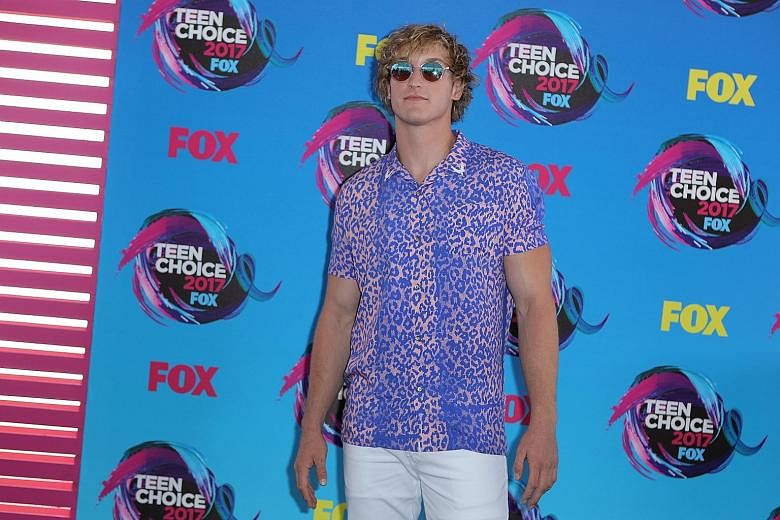NEW YORK • One of the main attractions of YouTube is that anyone can become a star.
There are no gatekeepers. No talent agents or television executives need to be won over.
Stars can come from anywhere - and they do.
Forbes' recent list of the richest YouTubers is proof. It is filled with people who post clips about playing video games or children playing with toys.
The top spot went to British gamer Daniel Middleton, known as DanTDM, a 26-year-old who earned US$16.5 million (S$22 million) last year.
But a new study finds that the odds of striking it rich on Google-owned YouTube, or even making a modest living, are getting small.
Reaching the top 3.5 per cent of YouTube's most-viewed channels - which means at least one million video views a month - is worth only about US$12,000 to US$16,000 a year in advertising revenue, according to Professor Mathias Bartl of the Offenburg University of Applied Sciences in Germany.
In his study - one of the first to examine YouTube data for clues about how it works for creators - Prof Bartl found that it has become harder for new creators to reach the top, as YouTube adds 300 hours of video every minute and the biggest stars become more successful.
The median views per video plummeted to 89 in 2016 from 10,262 a decade earlier.
At the same time, YouTube's biggest channels are gobbling up more eyeballs. The top 3 per cent of channels got 64 per cent of all views in 2006. A decade later, the top channels took 90 per cent.
Competition among creators on YouTube is fierce, and that has led to trouble.
Last month, YouTube suspended all advertising on channels run by video blogger Logan Paul, one of its biggest stars, after a series of controversies, including videos he made showing his visit to a so-called suicide forest in Japan.
Another star, Mr Felix Kjellberg, known as PewDiePie, was found to have used a racial epithet and made anti-Semitic jokes in some of his gaming videos. He was dropped from Google's lucrative ad service for high-performing videos, and his planned series on pay channel YouTube Red was cancelled.
Now, YouTube is taking steps that make it even harder for creators at the bottom.
It recently said channels need to reach 1,000 subscribers and 4,000 hours of watch time over the previous 12 months before they can start to earn money from ads.
YouTube said the change is aimed at discouraging videos with objectionable or offensive content and that it would "affect a significant number of channels".
THE WASHINGTON POST

